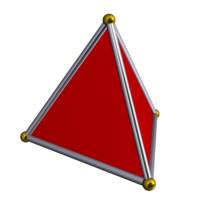
Photo from wikipedia
(1) Background: The quantitative evaluation and comprehensive measurement of resources and environmental carrying capacity (RECC) are key links in the study of RECC from classification to synthesis. Laos, as the… Click to show full abstract
(1) Background: The quantitative evaluation and comprehensive measurement of resources and environmental carrying capacity (RECC) are key links in the study of RECC from classification to synthesis. Laos, as the only landlocked country of Mainland Southeast Asia (MSEA), is an important economic corridor (i.e., China-MSEA Economic Corridor) of the Belt and Road Initiative (BRI). (2) Methods: Based on the human settlements index (HSI), resource carrying index (RCI), and socio-economic development index (SDI), here, a three-dimensional tetrahedron model for the comprehensive assessment of RECC with equilibrium significance was constructed, including HSI-based suitability classification, RCI-based restrictive classification, and SDI-based adaptability classification. Taking provinces as the basic unit, we quantitatively assessed and comprehensively evaluated RECC in Laos using a three-dimensional tetrahedron model. (3) Results: The human settlement environment in Laos is mainly characterized by the moderate suitable category (85%), while the high suitability area (merely 5%) supports more than 30% of the total population. Laos had over 90% of its area in good condition in resources and environmental carrying status (surplus or balanced state), translating into more than 95% of the population. The social and economic development level is mainly characterized by low-level development (43%), with nearly 30% of the population living in these low-level areas. The comprehensive bearing state of resources and environment is characterized by surplus, and 85% of the population is distributed in the surplus area, which occupies 63% of the land. (4) Conclusions: It is possible to better explore the adaptation strategies and countermeasures for enhancing RECC in Laos and provide a scientific reference for regional sustainable development. We believe that the three-dimensional tetrahedron method can be applied to quantitatively evaluate and comprehensively measure RECC at larger scale, e.g., the BRI regions.
Journal Title: International Journal of Environmental Research and Public Health
Year Published: 2022
Link to full text (if available)
Share on Social Media: Sign Up to like & get
recommendations!